
When it comes to William Shakespeare (1564–1616), playwright and poet, the Library’s collections are best on how his plays have been performed in Australia from the late eighteenth century to the present—playbills, programs, posters, costume designs, photographs and manuscripts.
Yet the Library’s rare books collections also include many Shakespearean gems that do not as frequently take centre stage.
In honour of William Shakespeare’s birthday on 23 April, this blog explores some of them.
The Merchant of Venice from the First Folio
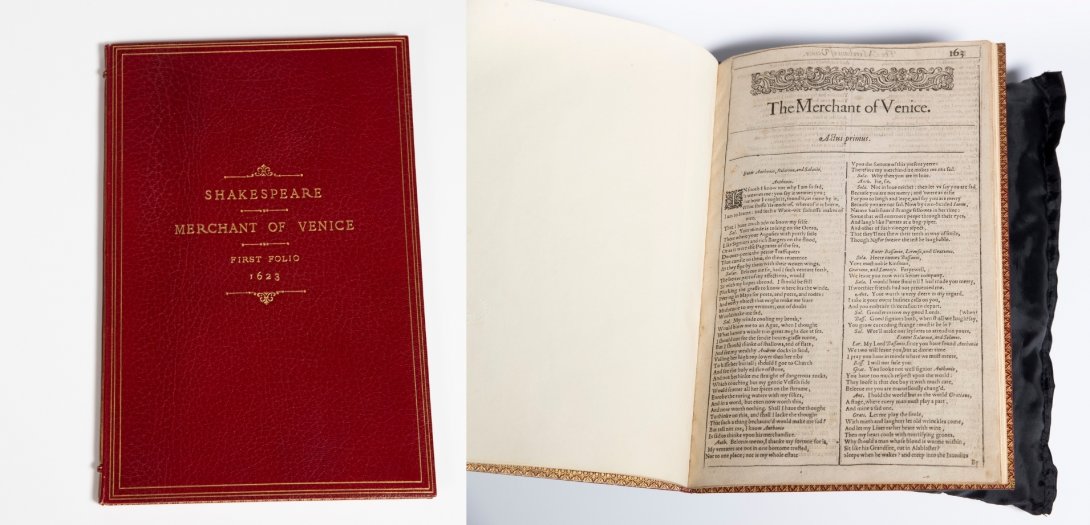
When still in Melbourne, the Commonwealth Parliamentary Library, from which the National Library of Australia was established, acquired The Merchant of Venice from the First Folio. Its purchase was announced in Melbourne’s The Australasian newspaper on Saturday, 24 May 1924:
[it] will take pride of place in the fine Shakespearian section of the library. The play has been superbly bound in red crush Morocco, marbled, and extra finished, with gilt borders.
This year marks 400 years since the publication of the First Folio in 1623—the first full collection of Shakespeare’s plays, now one of the world’s most valuable printed books. While the Library does not hold any quartos or a complete First Folio yet, or any later folios (though it does have a leaf from the Fourth Folio), it has numerous facsimiles.
Of course, through subscriptions to databases including Early English Books Online and Eighteenth-Century Collections Online, most early modern books printed in English are digitally available to National Library readers.
The Library’s physical rare book holdings relating to Shakespeare are strong from the late 17th century, particularly the 18th century onwards, though it holds many of the 16th and early 17th-century books Shakespeare used as sources for his plays. It holds plays ‘improved’ by Restoration playwrights William Davenant and John Dryden during the reign of Charles II, and most if not all of the later, early editions of Shakespeare’s works, those edited by Nicholas Rowe (1709), Alexander Pope (1723–25), Lewis Theobald (1733), Thomas Hanmer (editions dating 1743–60), William Warburton (1747), Samuel Johnson (1765), Edward Capell (1768), George Steevens (1773), Edmond Malone (1790) and Isaac Reed’s First Variorum edition (1803). It also has good holdings relating to the Shakespeare forgeries controversy of the 1790s, including works by father and son Samuel and William Henry Ireland.
First complete edition of Shakespeare’s sonnets
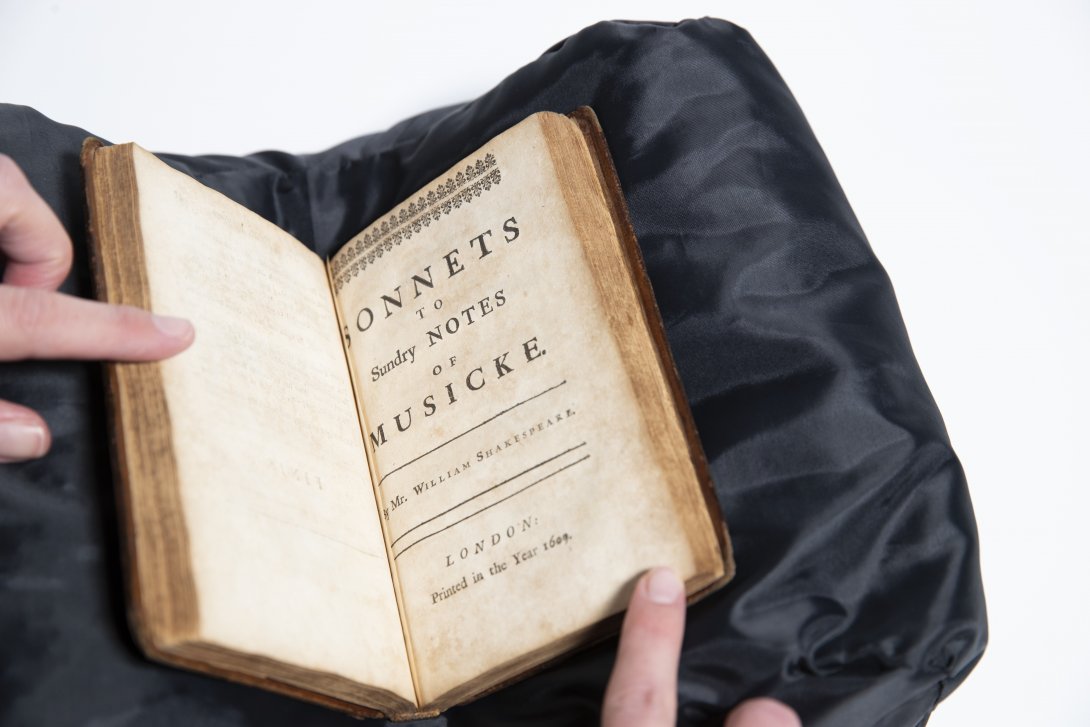
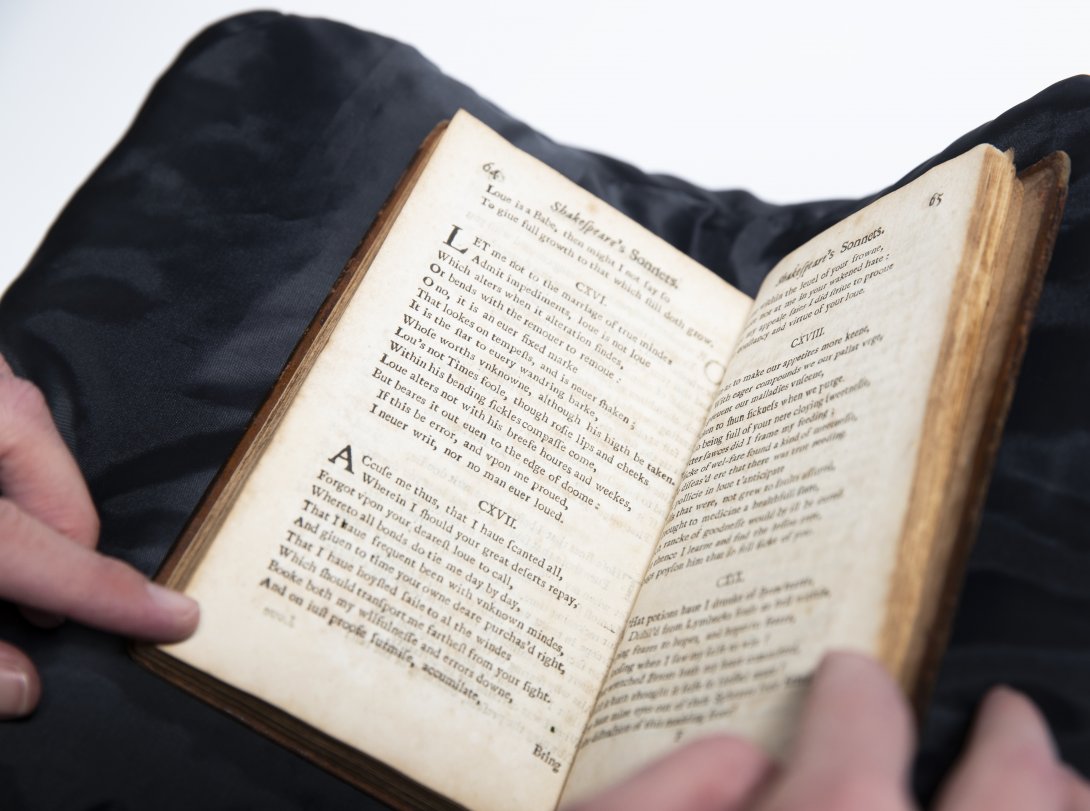
Highlights of our holdings include the first complete edition of Shakespeare’s sonnets published by Bernard Lintott. It was also the most accurate edition of the sonnets since they were first published in 1609. In the picture above, it is open to my favourite sonnet—116—which begins, characteristic font and all:
Let me not to the marriage of true minds
Admit Impediments, loue is not loue
Which alters when it alteration finds,
Or bends with the remouer to remoue:
O no, it is an euer fixed marke
That looks on tempests and is neuer shaken
The volume also includes his long narrative poems Venus and Adonis (1593) and The Rape of Lucrece (1594).
First illustrated edition
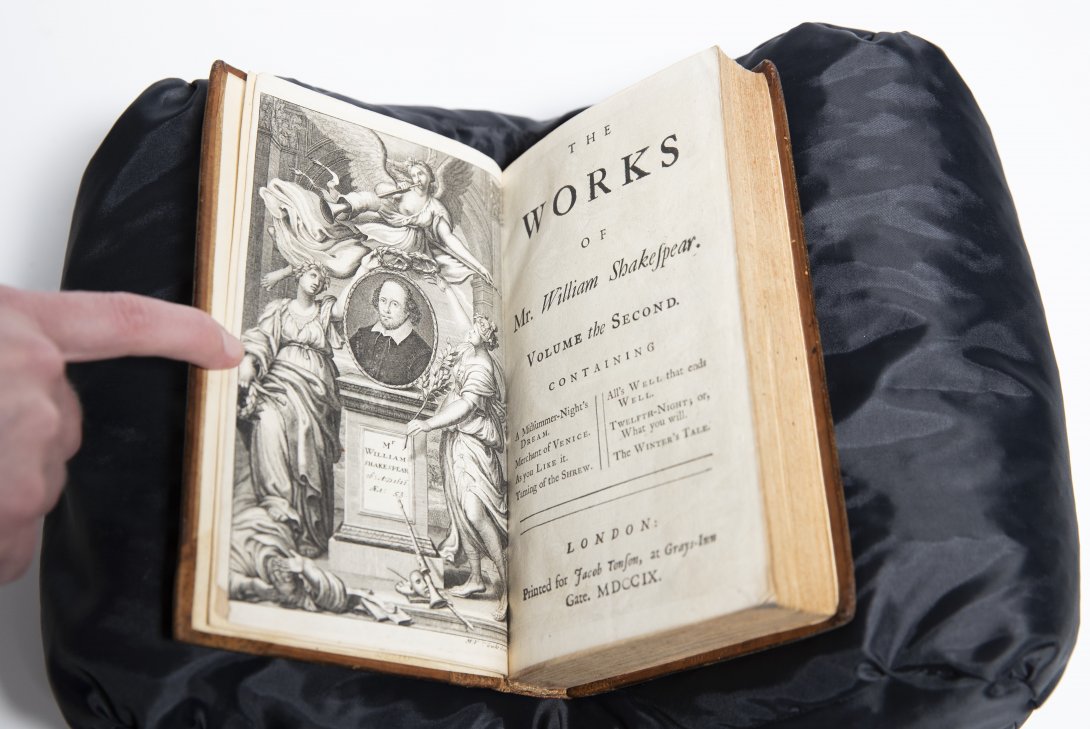
Edited by playwright Nicholas Rowe, and printed in 6 volumes, octavo size, this was the first illustrated edition of Shakespeare. Each volume has a frontispiece at the beginning (pictured above) and each play begins with an illustration, all figures in early eighteenth-century dress, contemporary to the printing. Rowe added stage directions, and lists of characters, but he had the disadvantage of relying on the untrustworthy Fourth Folio.
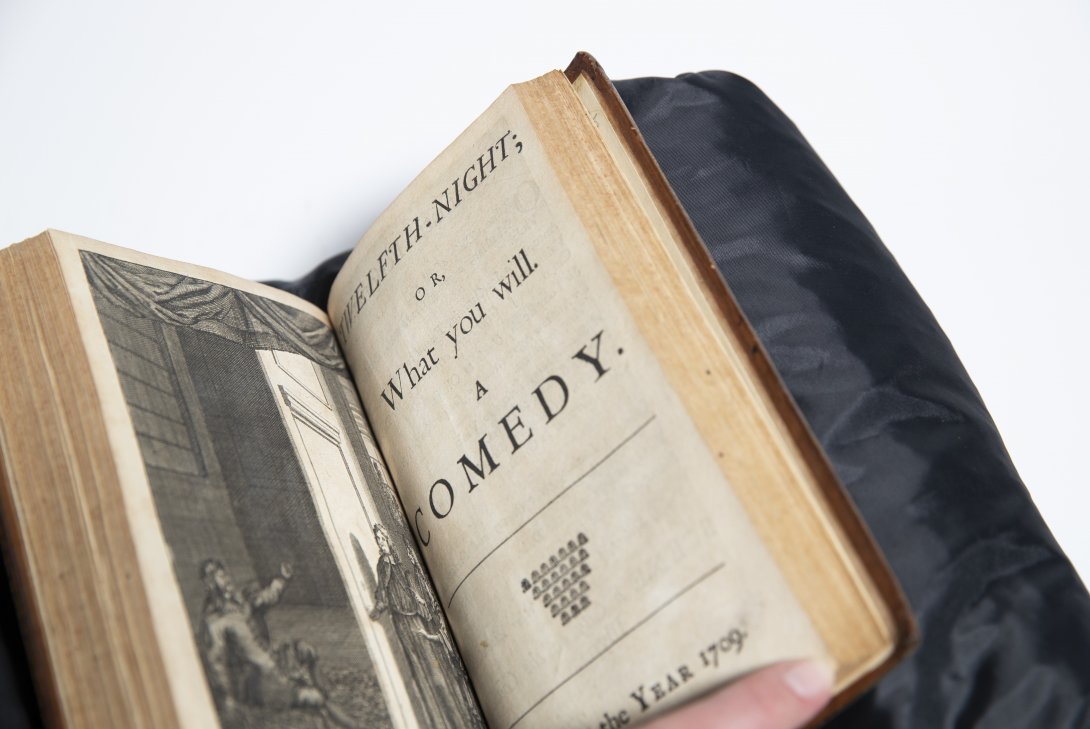
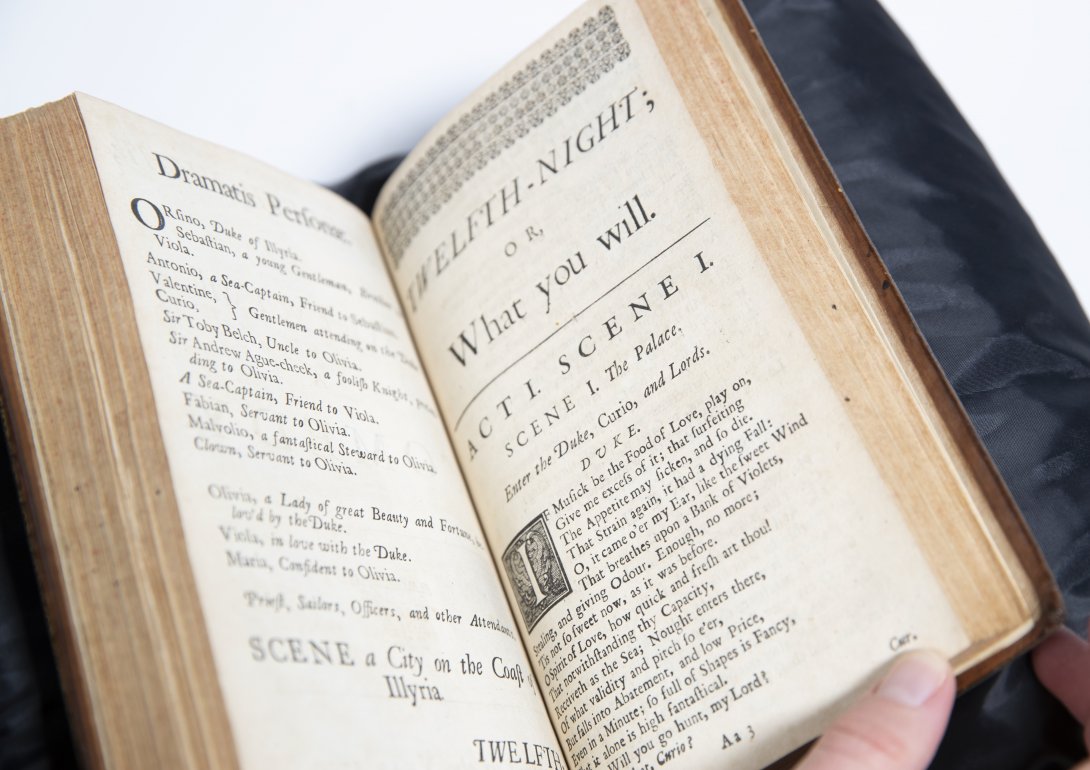
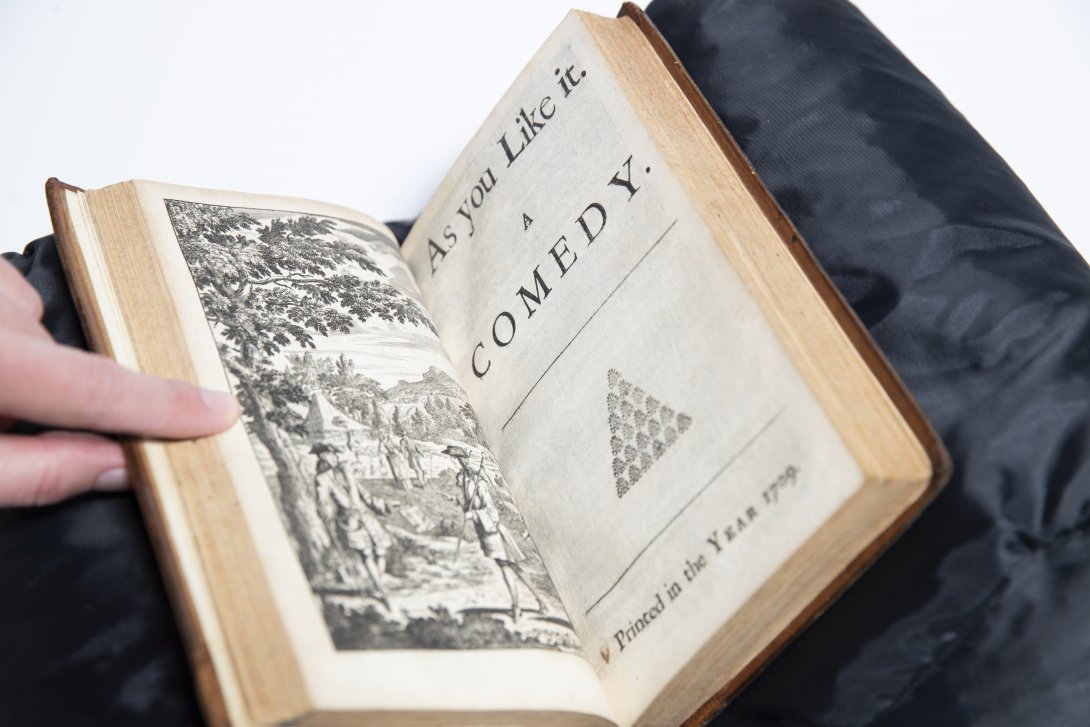
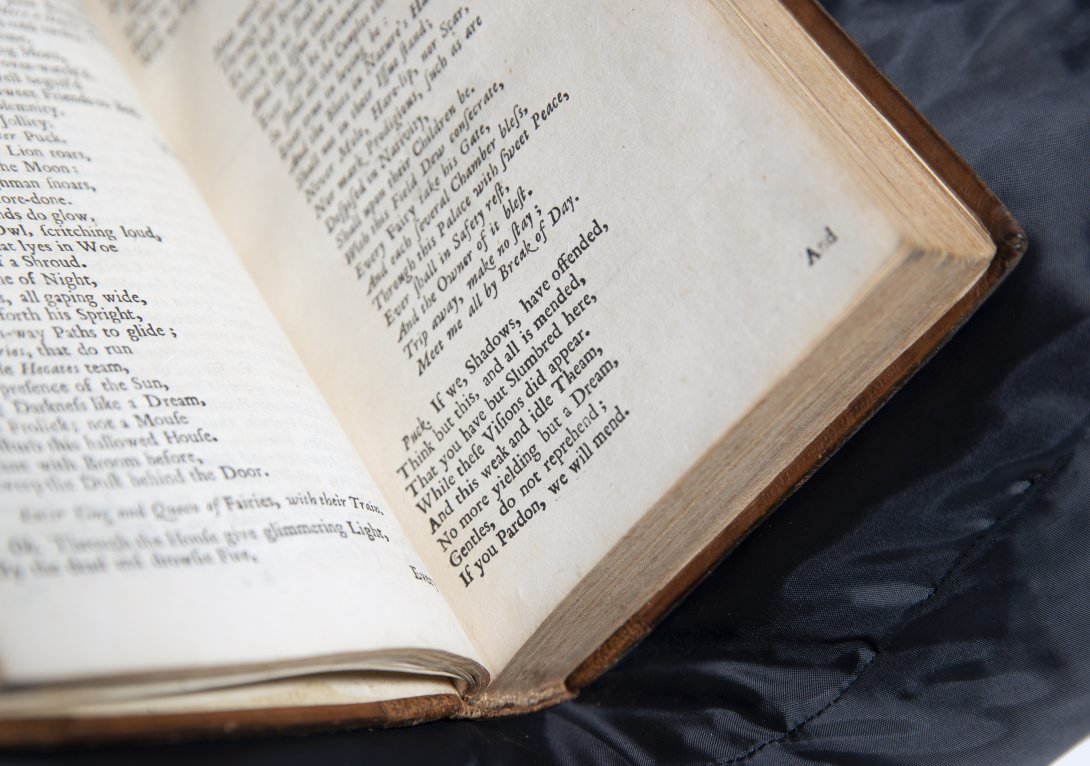
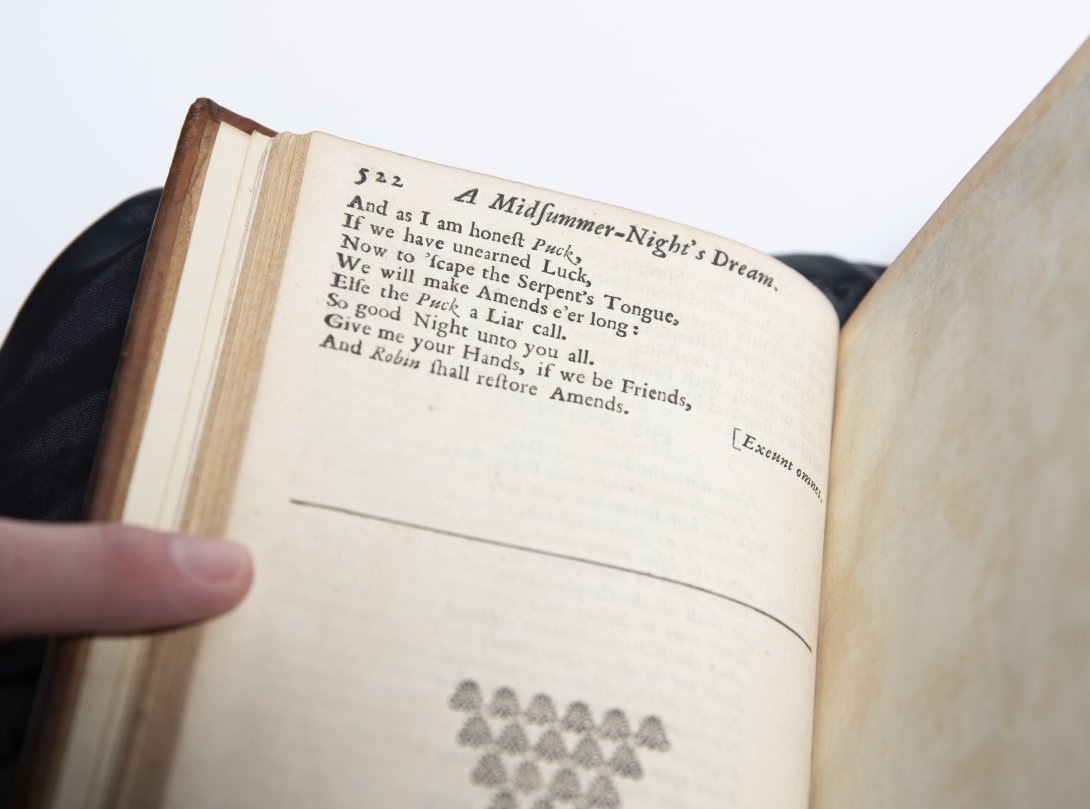
Biography of Shakespeare
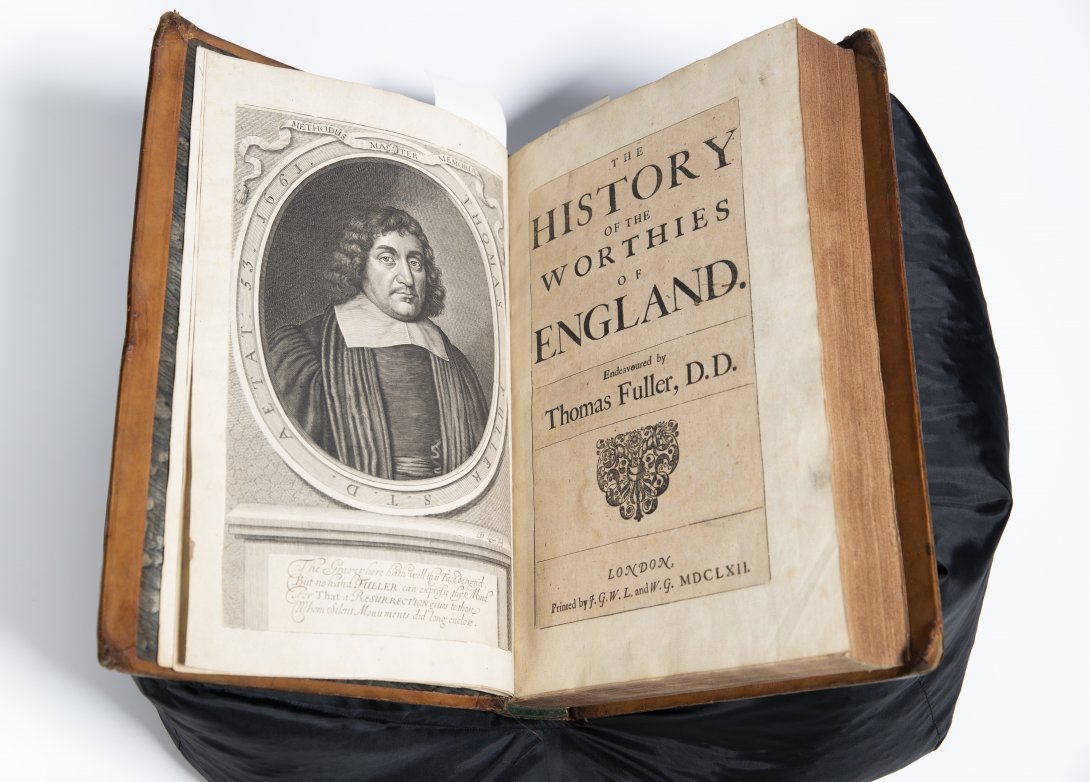
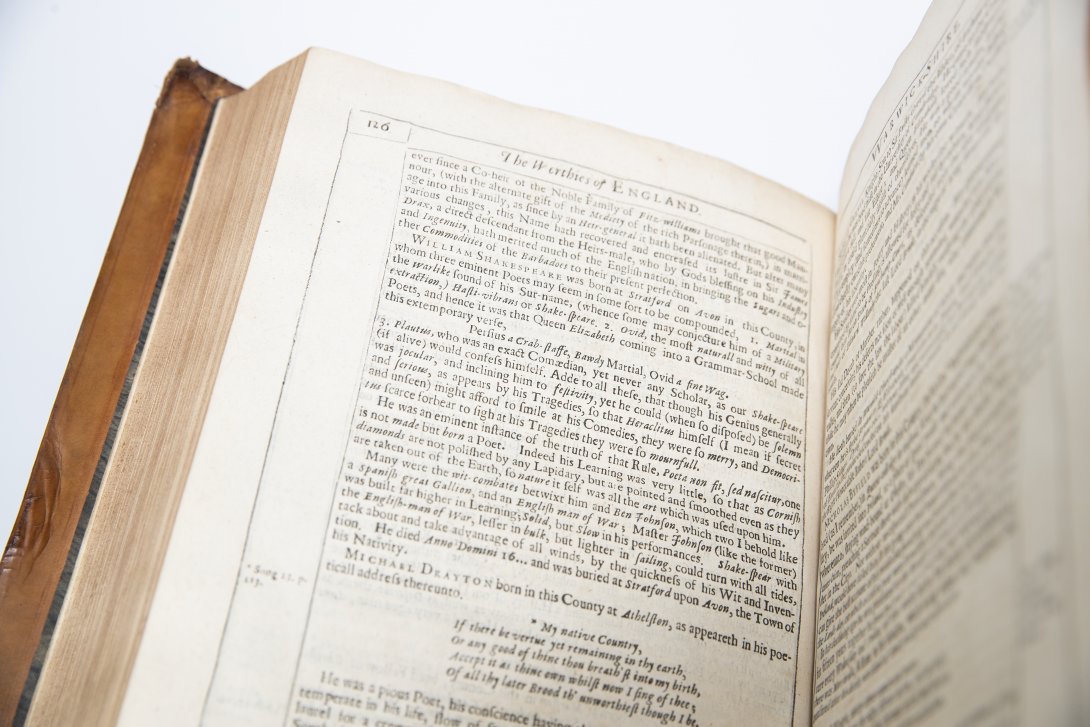
Though only half a page, Fuller’s Worthies (1662) is the first substantial biography of Shakespeare to appear in print, in what was effectively the first British national dictionary of biography. He praised Shakespeare's natural wit.
He was an eminent instance of the truth of that Rule, Poeta non sit, sed nascitur, one is not made but born a Poet. Indeed his Learning was very little, so that as Cornish diamonds are not polished by any Lapidary, but are pointed and smoothed even as they are taken out of the Earth, so nature it felt was all the art which was used upon him. ...[he] could turn with all tides, tack about and take advantage of all winds, by the quickness of his Wit and Invention.'
Shakespeare, Indexed
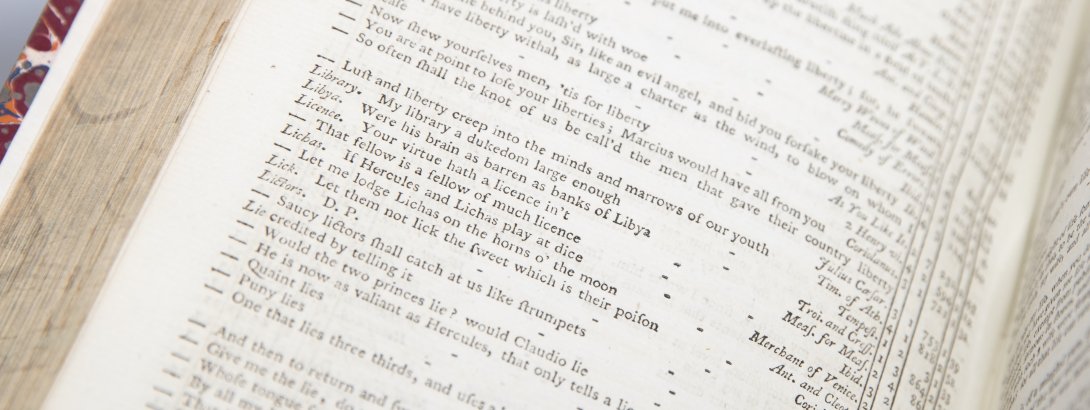
This was one of the earliest indexes of words used by Shakespeare. It was compiled by Samuel Ayscough, an ordained minister, fellow of the Society of Antiquaries and assistant librarian of the British Museum, the precursor to the current British Library.
In the photo above, it’s open to the entry for ‘library’. There’s only one entry: ‘My library a dukedom large enough’, from The Tempest.
First Australian performance of Shakespeare
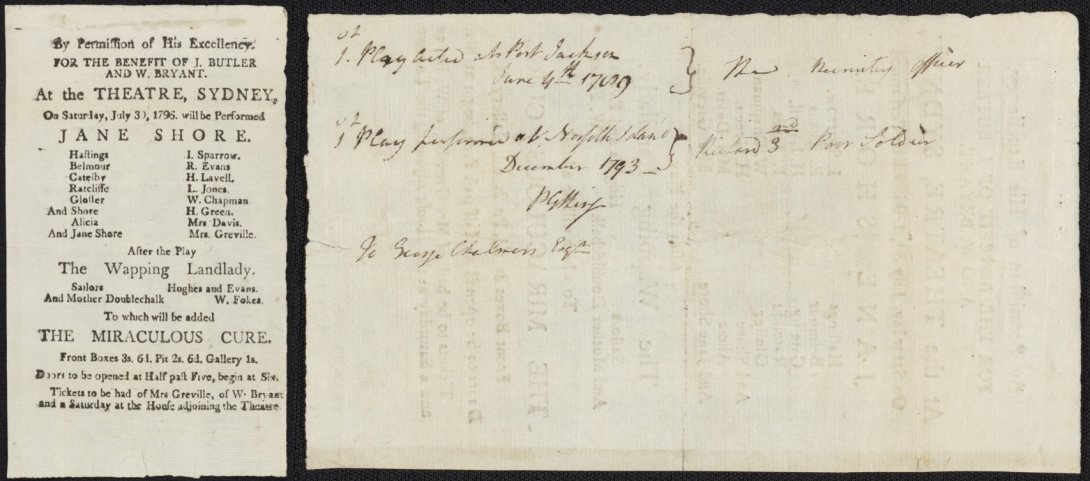
The Library’s 1796 playbill—the earliest surviving document printed in Australia—has an inscription on the reverse in the hand of governor Philip Gidley King saying that Richard III (and the British comic opera Poor Soldier (1783)) was the first play performed on Norfolk Island, in December 1793. Norfolk Island was a penal settlement at that time.
Australian edition
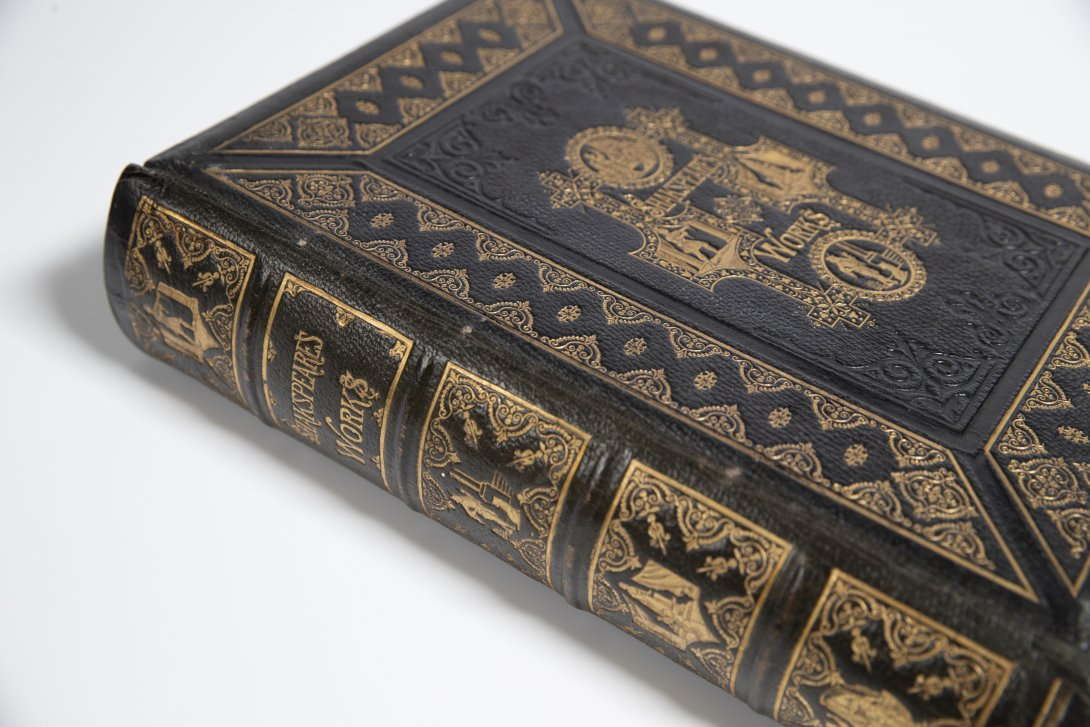

This is the first Australian edition we hold of Shakespeare’s works. It is very close to the English edition, which we also hold.
Shakespeare in Australia 150 years ago
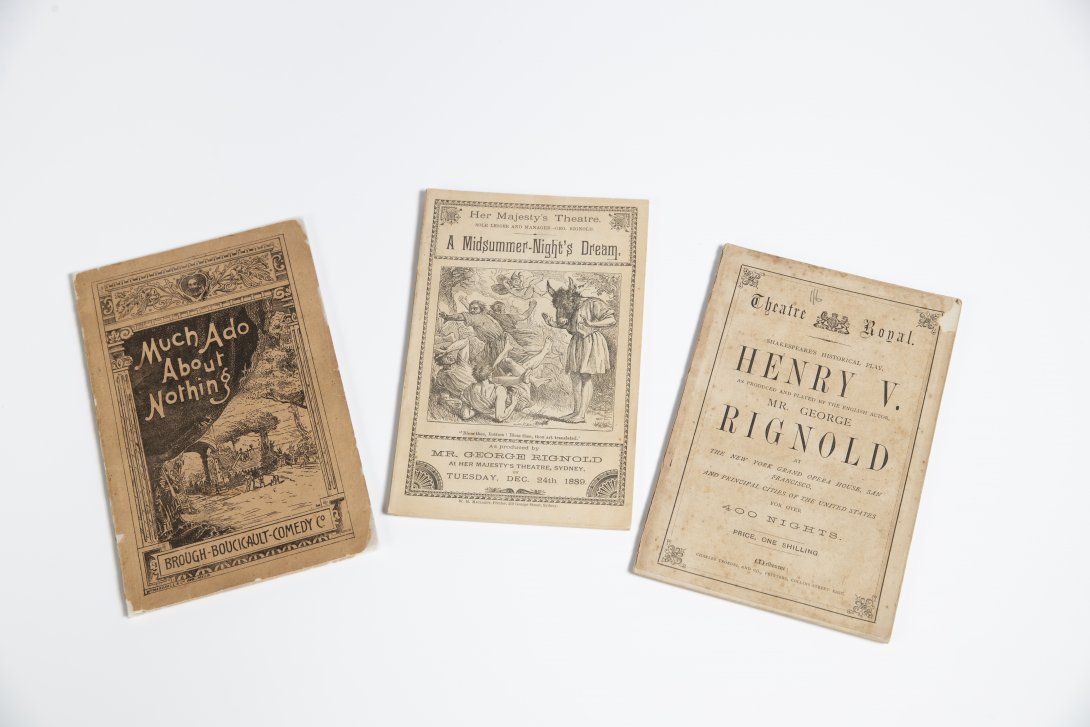
By the late 19th century, theatres were thriving as gold-fuelled wealth flushed Australian towns and cities. In the late 19th century, English actor George Rignold (born Rignall) (1839–1912) regularly visited and later settled in Australia. We hold several slim editions of Shakespeare plays he presented in our Ferguson Collection, one of our major Australian rare books collections. The books were produced to coincide with the performances—quite common at that time in Australia. (We hold the ‘books’ for the great French actor Sarah Bernhardt’s Australian performances in the 1890s). As part of my research for this blog, I found that we also hold a contract for Rignold’s performances of Shakespeare's Henry V in Australia in 1876. Henry V was one of his signature roles—his home at Middle Harbour ‘flew Henry V’s standard whenever there’.
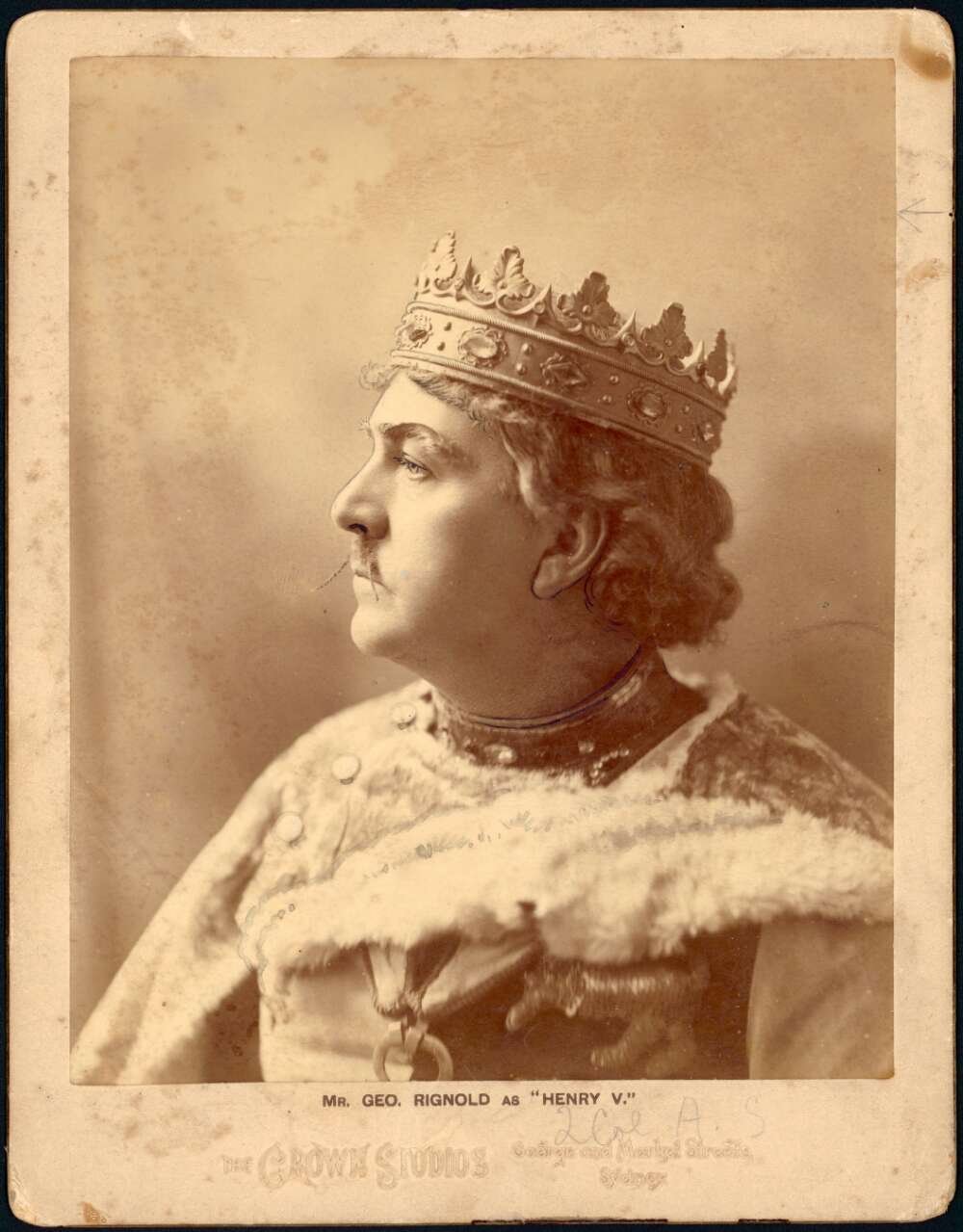
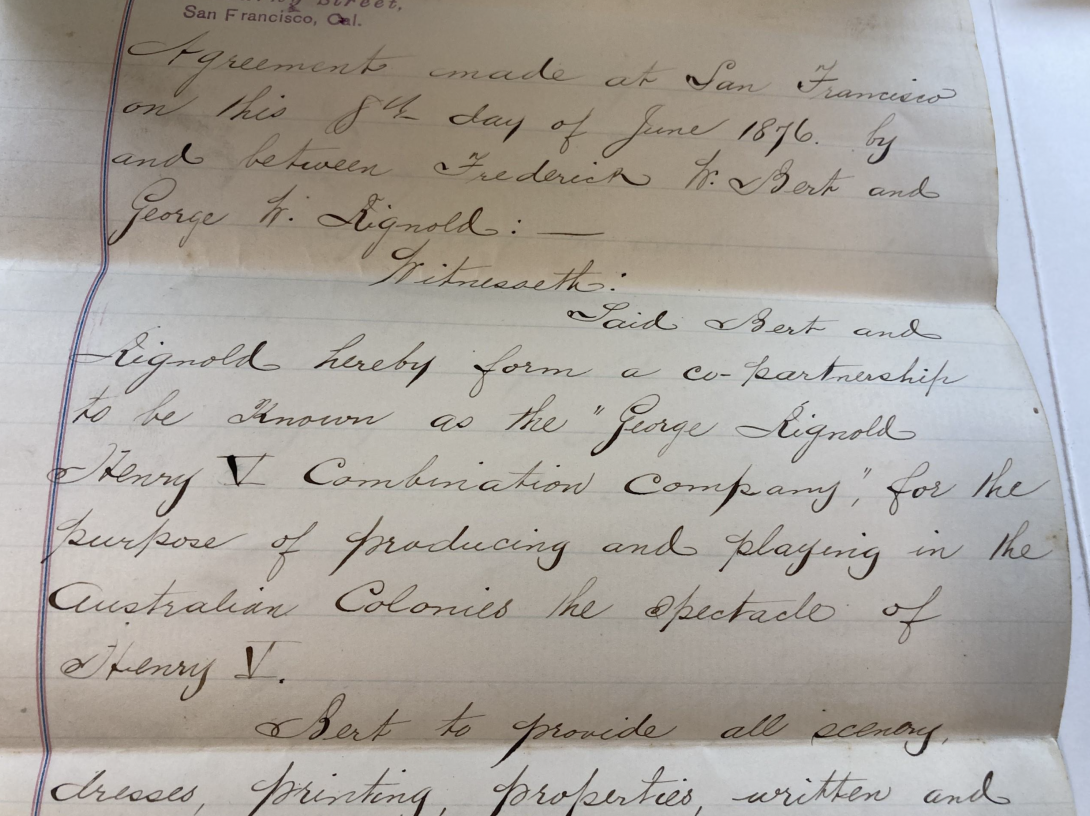
Whether you believe, like Dr Johnson, that William Shakespeare ‘taught us to understand human nature’, or like the late American critic Harold Bloom that Shakespeare ‘invented’ humanity or, that someone else entirely wrote Shakespeare's plays and poems, no one can deny the impact and genius of Shakespeare’s work. That is no doubt why we hold so much, including these rare books discussed here.
The Library is planning an event relating to Shakespeare and our collections for later in the year, so keep an eye on our website.
Dr Susannah Helman is Rare Books and Music Curator at the National Library of Australia.